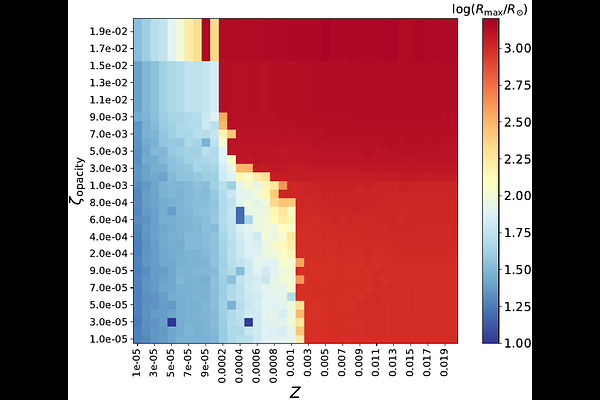Critical Metallicity of Cool Supergiant Formation. II. Physical Origin

Critical Metallicity of Cool Supergiant Formation. II. Physical Origin
Po-Sheng Ou, Ke-Jung Chen
AbstractThis study investigates the physical origin of the critical metallicity ($Z_{\rm c}\sim 0.001$) required for the formation of cool supergiants, as revealed by stellar evolution models. Using model grids that vary in mass, metallicity, opacity, and nuclear reaction rates, we identify a threshold terminal-age main-sequence (TAMS) radius ($R_{\rm T}$) that determines whether a star of a given mass can evolve into the red supergiant (RSG) phase. Through stellar models and homology relations, we show that metallicity affects the TAMS radius via its influence on opacity and nuclear energy generation. By classifying the evolutionary pathways of supergiants, we demonstrate how TAMS radius, shaped by metallicity, decisively governs the post-main-sequence outcome: Stars with metallicities $Z < Z_{\rm c}$ exhibit TAMS radii smaller than $R_{\rm T}$ and proceed to advanced core helium or carbon burning while retaining compact envelopes, thereby preventing further expansion into the RSG regime. In contrast, stars with $Z > Z_{\rm c}$ have TAMS radii larger than $R_{\rm T}$ and expand into the stable RSG phase during core helium burning. The envelope radius at the onset of core helium burning is the key factor determining whether a star becomes a red or blue supergiant. Our results explain the origin of the critical metallicity and offer insight into the evolution of metal-poor massive stars in the early universe.